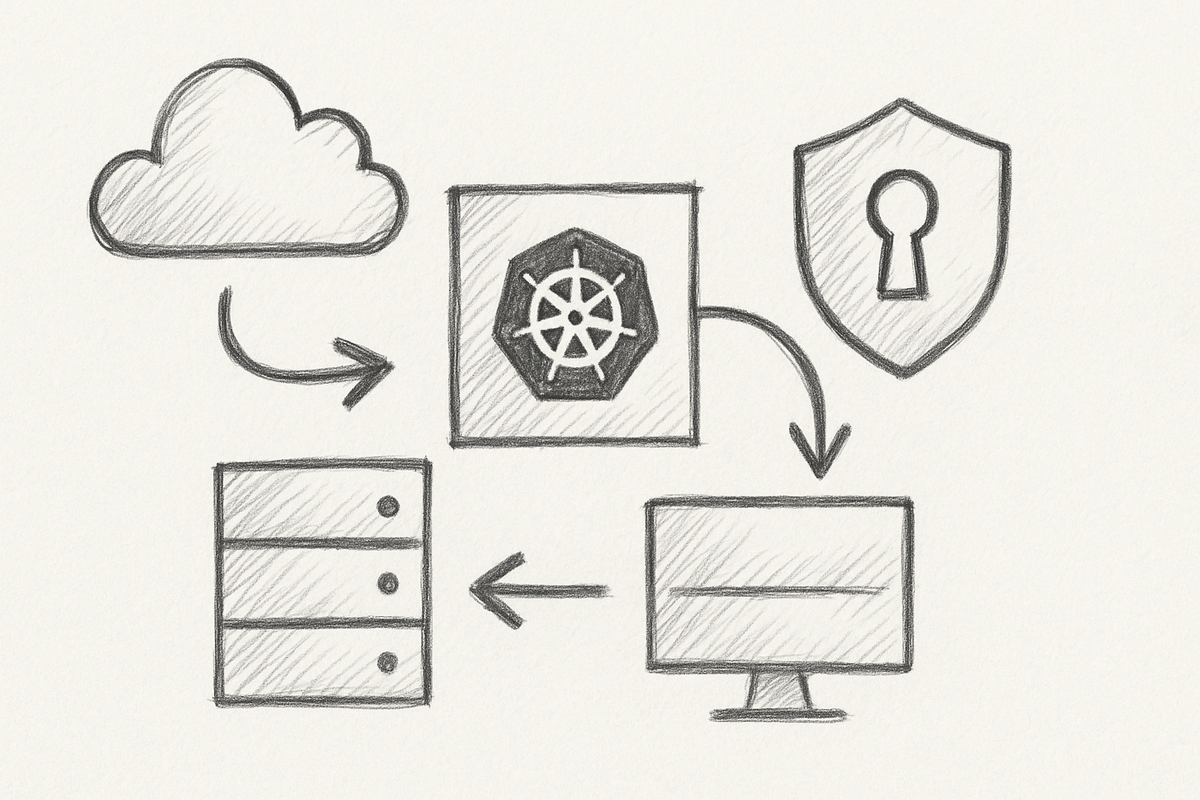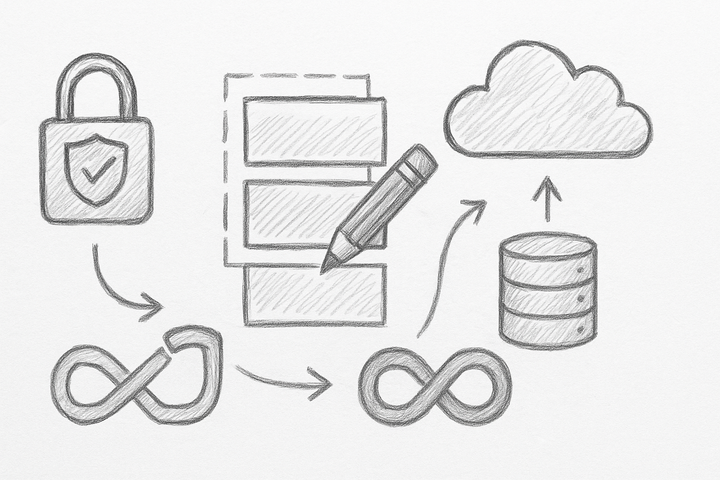CVE-2025-59303 in HAProxy Kubernetes Ingress Controller — Secret Exposure and How to Lock Down

Why Your Kubernetes Ingress Might Be Leaking Secrets (and What to Do About It)
What if your Kubernetes ingress controller was quietly betraying you—leaking sensitive secrets without a single warning? That’s precisely the nightmare CVE-2025-59303 turned into a reality. HAProxy’s Kubernetes Ingress Controller had a betrayal written in its very feature: the innocent-sounding config-snippets capability. If you’ve been sprinkling snippets to fine-tune your ingress routes, without guarding RBAC tightly, you might have just handed attackers the keys to your kingdom.
I still vividly recall the sleepless night when my pager shrieked with urgent whispers of secrets silently being siphoned from production. In the smoky glow of my terminal, we unearthed the culprit: config-snippets. Turns out, older HAProxy ingress versions let anyone with create or update privileges slip in fragments that boldly leaked ingress tokens in plain text. It was a “you trusted me, but I totally backstabbed you” moment on an epic scale.
Ignoring this vulnerability? That’s as reckless as leaving your front door unlocked because you “think no one’s around.” Beware: leaked ingress tokens don’t just expose secrets — they’re your adversaries’ springboard for lateral moves, privilege escalations, and potentially company-wide breaches.
The Nitty-Gritty: What CVE-2025-59303 Is All About
Let’s decode the monster. HAProxy’s Kubernetes Ingress Controller pre-3.1.13 featured config-snippets, letting admins weave custom fragments directly into the HAProxy config. Sounds handy? Absolutely. But, as Spider-Man’s uncle famously said, “with great power comes great risk.”
Here’s the sting: a user with create or update access to ingress config-snippets could sneakily embed a snippet that dumps ingress token secrets back in HTTP responses, clear as day. This gushing pipeline is a ticking time bomb, born out of insufficient validation and sanitisation of these snippets.
If you haven’t already upgraded to HAProxy Enterprise Kubernetes Ingress Controller 3.0.16-ee1, 1.11.13-ee1, 1.9.15-ee1 or later, you’re essentially an open house. Patches released 8th October 2025 slam the door shut by hardening snippet handling and plugging the secret-exposure hole HAProxy Official Blog and NVD CVE-2025-59303.
How Can You Tell if You’re Exposed?
First off — don’t fool yourself with “it won’t happen to me.” Assume compromise until you prove otherwise. Blind trust is the enemy.
Audit your clusters relentlessly. Hunt for weird annotations, logs screaming of config-snippet changes, or ingress responses suspiciously peppered with secrets. Review who’s been creating or updating config-snippets; if it’s more folks than Amazon on Black Friday, you have a problem.
If your ingress controllers run unpatched HAProxy versions with config-snippets enabled, sound every alarm. The nightmare isn’t just the exposure itself — it’s the ripple effect: attackers lateral-moving and escalating with leaked tokens acting like master keys to your digital kingdom.
Patching: Don’t Delay, Automate
Patching this is not a “tomorrow” job; it’s an emergency production fire drill. Upgrade immediately to the patched versions or disable the config-snippets feature yesterday if patching is temporarily impossible.
Automation is your ally here. Hook the upgrades and sanity checks into your CI/CD pipelines, ensuring ingress responses no longer spill secrets. Rolling upgrades across clusters keep services humming without embarrassing downtime.
Here’s a quick sanity check recipe to verify your ingress controller version and pod health:
kubectl -n ingress-nginx get pods | grep haproxy
kubectl exec -n ingress-nginx <haproxy-pod> -- haproxy -v # Confirms HAProxy version running in pod
If you catch the vulnerable versions lurking, it’s already too late—patch now.
Lock It Down: Beyond the Patch with Defence-in-Depth

1. RBAC Minimisation for Ingress Config-Snippets
The mantra: restrict. Only the absolute minimum number of engineers or service accounts should wield create/update rights on ingress config-snippets. Anything else is like giving your toddler the nuclear launch codes.
Here’s an RBAC Role restricting config-snippet edits to a tight-knit ingress-admins group:
apiVersion: rbac.authorization.k8s.io/v1
kind: Role
metadata:
name: ingress-snippet-editor
namespace: ingress-nginx
rules:
- apiGroups: ["networking.k8s.io"]
resources: ["ingresses"]
verbs: ["get", "list", "watch"]
- apiGroups: ["networking.k8s.io"]
resources: ["ingresses/status"]
verbs: ["update"]
- apiGroups: ["networking.k8s.io"]
resources: ["ingresses"]
verbs: ["create", "update"]
resourceNames: ["config-snippet"]
---
apiVersion: rbac.authorization.k8s.io/v1
kind: RoleBinding
metadata:
name: ingress-snippet-edit-binding
namespace: ingress-nginx
roleRef:
apiGroup: rbac.authorization.k8s.io
kind: Role
name: ingress-snippet-editor
subjects:
- kind: Group
name: ingress-admins
apiGroup: rbac.authorization.k8s.io
Automate these audits with tools like OPA/Gatekeeper — because if you don’t know who’s got keys, neither will you when the lights go out.
2. Snippet Validation and Sanitisation
Unchecked snippets are the Swiss cheese of your security—full of holes ready to be exploited. Admission controllers that scan and reject snippets containing suspicious patterns (think “secret”, “token”, or arbitrary exec commands) form an essential last line of defence.
A conceptual OPA Rego snippet to reject any snippet containing the keyword "secret" might look like this:
package kubernetes.admission
deny[msg] {
input.request.kind.kind == "Ingress"
snippet := input.request.object.metadata.annotations["config-snippet"]
contains(lower(snippet), "secret")
msg := "Config-snippet contains forbidden keyword: secret"
}
Replace “secret” and extend your regexes liberally—attackers are clever, but automation catches lazy slip-ups.
3. Sidecar Proxy Protection Patterns
Sidecar proxies watching over ingress controllers, tossing suspicious requests into the bit bucket? It’s a solid last-resort strategy. Sure, adding these proxies drags latency by 10-20ms per request and complicates operations, but when secrets are on the line, a tiny wait is a small price to pay.
Configure your sidecar to blacklist HTTP call patterns that could serve secrets or tokens unexpectedly. It’s the digital equivalent of a bouncer checking IDs outside the club.
Continuous Monitoring and Real-World Validation
Mitigations that aren’t monitored are like locks on doors you never check. Integration with your CI/CD pipelines for snippet linting is not optional; it’s essential.
OpenTelemetry metrics and Prometheus alerts tracking ingress snippet anomalies can catch attacks in real-time. Feeding logs into your SIEM with alerts on unauthorized snippet changes ensures no shifty config gets by unnoticed.
From experience, snippet validation adds an imperceptible 5ms overhead — faster than your morning coffee’s kick-in time — while sidecars add 10-20ms per request. Worth it? Absolutely.
Lessons from the Frontline
I once witnessed a junior engineer, bright and eager if somewhat reckless, push a config-snippet containing hardcoded tokens directly into production. The blast radius? Massive. That wild Saturday night, I ended up firefighting while family celebrated birthday bliss without me. The tokens leaked via that snippet gave unauthorised lateral access across multiple namespaces before detection.
Here’s the brutal truth: patching alone won’t save you. Secrets should never dance naked anywhere but within vaults tightly locked down. Keep your snippets lean, validated, and allow edits only from a tight circle. Let automation be your early warning system before those problematic snippets hit prod.
Forward-Looking Thoughts
Kubernetes ingress security must graduate from afterthought to first-class citizen. Future trends point to:
- Built-in snippet validation admission controllers shipped out of the box
- Richer, more granular native RBAC controls for snippet scopes
- Service mesh integrations with secret management and workload identity federation
HAProxy’s roadmap hints towards granular snippet controls and deeper secret manager ties. If you’re not preparing now, you’re racing to catch yesterday’s vulnerabilities tomorrow.
Conclusion: The Concrete Checklist
- Patch immediately to HAProxy Kubernetes Ingress Controller versions ≥ 3.1.13 or respective EE patches HAProxy Official Blog
- Audit and aggressively minimise RBAC permissions governing ingress snippet creation and updates Kubernetes RBAC Best Practices
- Implement admission controllers like OPA/Gatekeeper to validate and sanitise all snippets Open Policy Agent Admission Controller
- Employ sidecar proxies to intercept and block requests potentially exposing secrets
- Embed continuous monitoring into your CI/CD, observability stacks, and SIEM systems Prometheus Monitoring for Kubernetes Ingress
Security isn’t a checkbox on your Jira board; it’s an ongoing discipline. Your ingress controller is your cluster’s front door — don’t let it become the conduit for secret leaks.
References
- HAProxy Official Blog on CVE-2025-59303
- NVD CVE-2025-59303 Detail
- Kubernetes RBAC Best Practices
- Open Policy Agent Admission Controller
- OPA Gatekeeper for Kubernetes
- Kubernetes Secret Management Recommendations
- Prometheus Monitoring for Kubernetes Ingress
For a broader security pipeline context and mastering artifact signing to ensure trust in your deployments, check out Cosign v3 Unpacked: Mastering Artifact Signing, Attestations & Seamless Migration for Secure DevOps Pipelines. Additionally, if you want to deepen your understanding of operational risk management and resilience strategies in large-scale cloud migrations, see GitHub’s Azure Migration: Navigating Operational Risks and Unlocking DevOps Benefits.
This article was forged from the crucible of production incidents, heavy on opinion and lighter on the fluff. Your ingress security depends on it.



